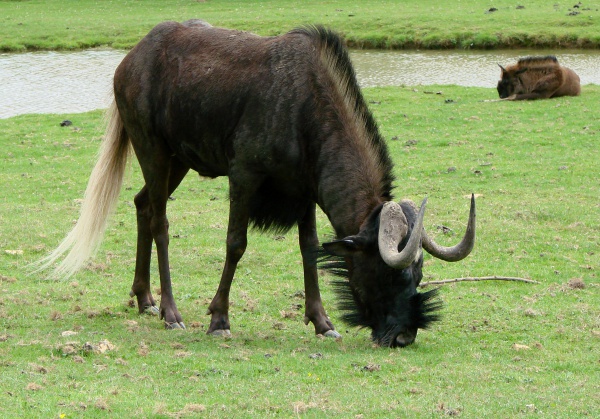Facts About Black wildebeest
The black wildebeest, also known as the white-tailed gnu, is a fascinating species closely related to the blue wildebeest. Part of the genus *Connochaetes* within the Bovidae family, it was first described in 1780 by Eberhard August Wilhelm von Zimmermann. This animal is distinctive for its white, horse-like tail, dark brown to black coat, and lengthy dark mane.
As herbivores, black wildebeests primarily feed on grasses and require water for survival. They form various social groups, including female herds, bachelor herds, and territorial bulls. They communicate through a combination of visual signals and vocal sounds.
The breeding season for black wildebeests typically occurs from February to April. After an approximate gestation period of 8.5 months, females give birth to a single calf, which remains with its mother until she has another offspring. Once nearly driven to extinction due to hunting for their hides and meat, black wildebeests have been successfully reintroduced to areas where they once roamed freely. Today, they thrive in open plains, grasslands, and Karoo shrublands in southern Africa.
Taxonomically, black wildebeests belong to the genus *Connochaetes* and share many characteristics with blue wildebeests. Despite facing threats such as habitat loss, disease, and hybridization with their blue cousins, conservation efforts have facilitated a rebound in their numbers. The International Union for Conservation of Nature (IUCN) currently classifies them as a species of "Least Concern."
Black wildebeests hold economic value as tourist attractions and sources of leather and meat. Their meat is often processed into biltong, a popular South African snack. However, they can also compete with livestock and spread diseases, posing challenges for humans. Despite these issues, black wildebeests play a crucial role in their ecosystems and hold cultural significance in the regions they inhabit.

 Namibia
Namibia